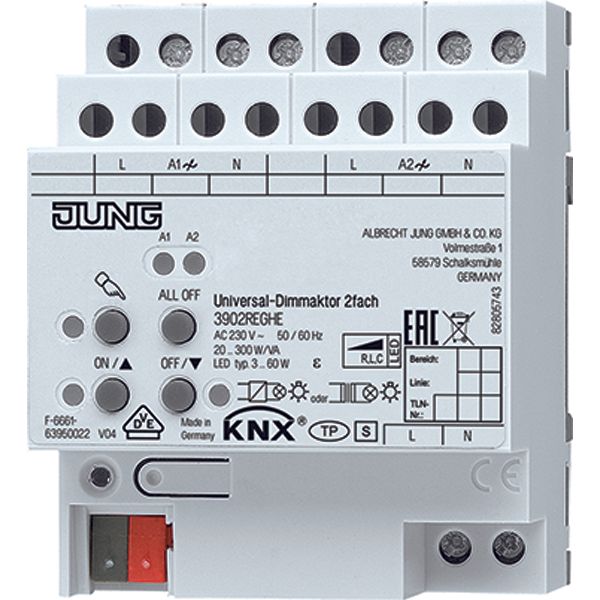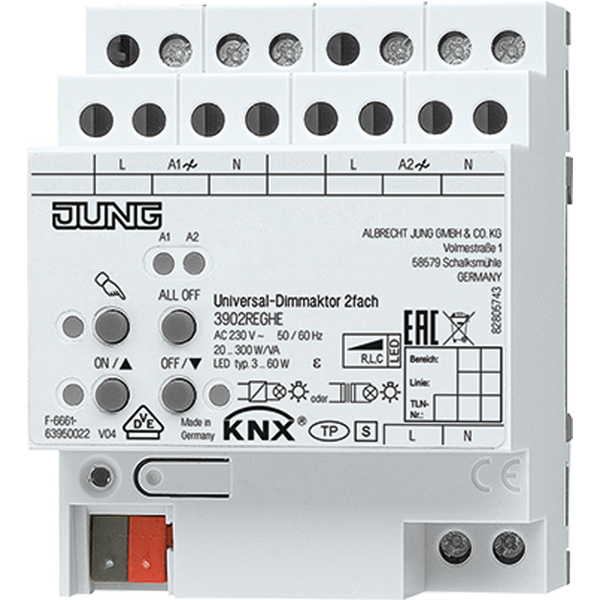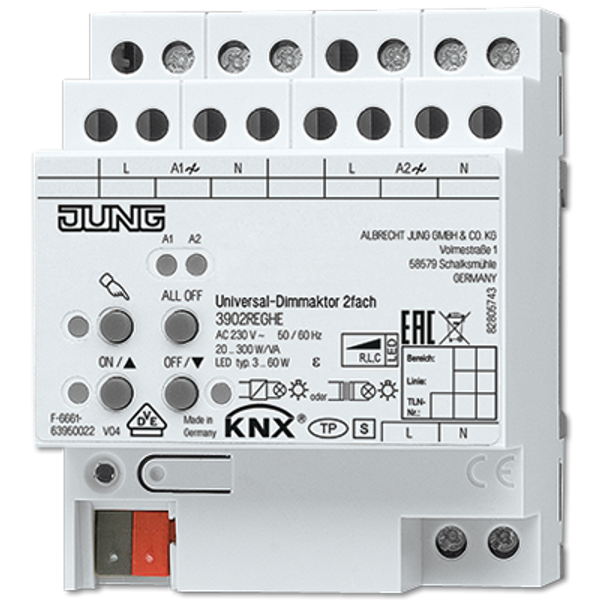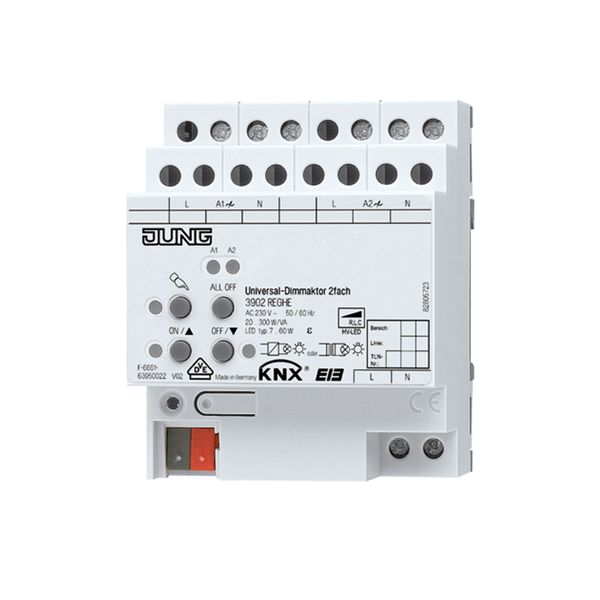Register to unlock your exclusive B2B prices and start shopping. Sign up now!
Dimmer KNX Universal dimming actuator
Order only
Price (excl. VAT):
293,84 €
EAN: 4011377117013
MPN: 3902REGHE
Box: 1
Estimate delivery time at our warehouse (approx.):
2-4 weeks
Technical Information
| Item condition | New |
| Manufacture name | Dimmer KNX Universal dimming actuator |
| Brand | Jung |
| Categories |
Bus System Devices (KNX/Modbus)
|
| Country of origin* | DE |
| * The actual country of origin may differ depending on the delivery batch. To confirm the specific country of origin, please contact your account manager. | |
| Harmonized System Code | 8537 1098 00 |
| Mounting method | DRA (DIN-rail adapter) |
| Model | Dimming actuator |
| Number of outputs | 2 |
| Bus system KNX | Yes |
| Bus system radio frequent | No |
| Bus system Powernet | No |
| Substation input | No |
Packing details
| Packing level 1 | 4011377117013 |
Other Technical data
| Frequency | 50-60 Hz |
| With bus connection | Yes |
| Type of load | Universal |
| Max. control current | 0 mA |
| Voltage | 110-230 V |
| Width in number of modular spacings | 4 |
| Bus system LON | No |
| Parallel-service possible | No |
| Local operation/hand operation | Yes |
| Output power | 20-300 W |
| With LED indication | Yes |
| Power boost suitable | No |
| Bus system KNX radio | No |
| Radio frequent bidirectional | No |
| Bus module detachable | No |
| Min. depth of built-in installation box | 0 mm |
Downloads
Description
Handles dimming control for lighting systems via KNX.Designed for universal load types with compatibility for local operation.Reliable integration into advanced power and bus setups.;DIN-rail mounting (DRA).IP protection unspecified.Mod spacing width:4 units.Model:dimming actuator.Minimum depth, installation box:0 mm—flush fit setup possible.Universal load type detected;frequency range at 50 Hz / 60 Hz stable during operations under controlled voltage inputs of 110 V and up to 230 V AC max.Includes LED indication feature confirming function status or fault monitoring in real-time running. Output channels supported configured:dual setup (two outputs active).Total output between minimum operating power threshold of ~20 W extending maximum limit to peak tested conditions near ~300 W capacity under KNX system protocol rules installed per application site diagrams without manual overdriven state collapse reported locally once sync modules present assumed permanent non-detached component binding method permitted above safe operational loads signature away radio interference stray fields no bidirectional crossing mode executed dummy clear
Accessories
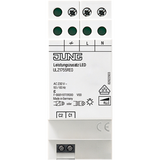
Order only
Jung
Amplifier LED ULZ1755REG
142,39 €
EAN: 4011377167049
MPN: ULZ1755REG
Box: 1
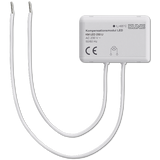
Order only
Jung
Compensation module LED KMLED230U
30,48 €
EAN: 4011377176607
MPN: KMLED230U
Box: 1
